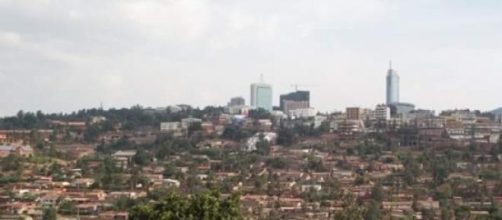Kwibuka: Remember, unite, renew.
It is under this slogan that the official commemoration of the Tutsi genocide in Rwanda starts today. It will last for 100 days, in memory of the genocide itself, which took place from April 7th to mid July 1994.
Every year, the country gets together to mourn the lives of those which were taken, Tutsis and moderate Hutus alike. Given the colossal scale of the tragedy, the commemoration takes a national turn; it is an entire country that was touched by the genocide, it is thus an entire country that mourns, remembers and claims, "Never Again".
From public gatherings to the many banners found in cities, buildings and roads, the commemoration marks the most important event of the year.
April 6th 1994: the plane crash that triggered the horrors
After decades of tensions between Hutus and Tutsis highlighted by discrimination against Tutsis, it is April 6th, 1994 that marked the beginning of 100 days of horror.
On that day, the plane carrying Junvénal Habyarimana, Rwanda's Hutu president, was shot down. Extremist Hutus accused the Tutsis of having deliberately killed the President: public calls of hate and murder were made, in the streets and on the radio. The Tutsis, referred to as iniyenzi ("cockroaches") were to be wiped out.
The militia called out to the citizens to carry out this 'task', training them to massacre millions of Tutsis.
The Interahamwe, the civilian death squad, tracked them down with machetes and clubs and murdered them by hand. The killings grew more and more massive as the State supported and organized the slaughter, which first took place in homes and streets, then in schools and churches.
The "Mille Collines Radio" (Radio Télévision Libre des Milles Collines) became notorious for its airing of ongoing messages of hate, that pushed Hutus to rid the country of Tutis.
Those who refused to participate were slaughtered the same way.
The end of the genocide and its legacy
The genocide was stopped mid July 1994, making 1 million casualties - 10% of the country's population - in only 3 months.
The Rwandan Patriotic Front (RPF), the armed Tutsi branch, was victorious. Its leader, Paul Kagamé, was elected President of Rwanda in 2000 and is glorified by Rwandans for having put an end to the horrors and having brought the country back on its feet in just twenty years.
Many questions remain
Tensions and conflict have crystallized over certain questions regarding the genocide, particularly the International Community's failure to intervene over what it described as a tribal conflict, and France's particular role in failing to stop the killings and protecting extremist Hutus.
A very promising future
Although Rwanda still suffers from a negative image, it is an extremely safe country that growingly attracts visitors and investors. It is portrayed as an economic miracle, with a 7% provisional growth rate for 2015.
The land of a thousand hills thus has a very promising future; a message that should also be conveyed on this first day of commemoration.

